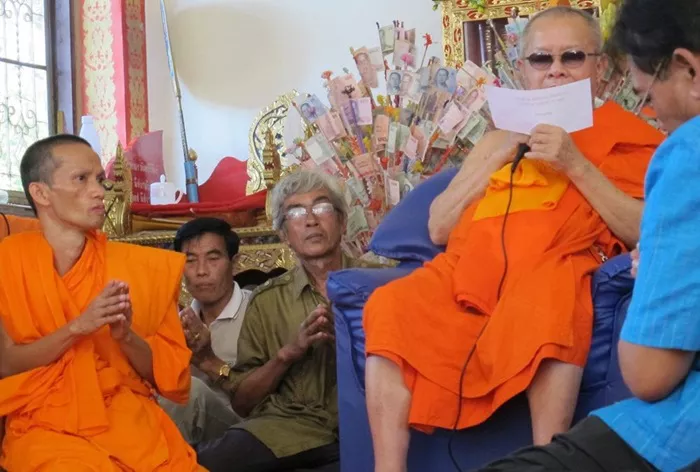Theravada Buddhism is one of the oldest branches of Buddhism. It means “Teaching of the Elders.” This tradition closely follows the original teachings of the Buddha. It is mostly practiced in countries like Sri Lanka, Thailand, Myanmar, Laos, and Cambodia.
Theravada Buddhism is based on the Pali Canon, which is believed to contain the actual words of the Buddha. The goal in this path is to achieve Nirvana through personal effort and deep meditation.
Key Beliefs of Theravada Buddhism
Theravada Buddhists believe in the Four Noble Truths. These truths help explain why we suffer and how to end suffering. They also follow the Noble Eightfold Path, which guides one to live a moral and mindful life.
Another belief is in karma and rebirth. Your actions in this life affect your next life. Good actions lead to good results, and bad actions lead to suffering.
Steps to Become a Theravada Buddhist
1. Learn About the Buddha and His Teachings
Start by learning about the life of the Buddha. He was born in India over 2,500 years ago. He left his royal life to find the cause of suffering. After many years of meditation, he became enlightened and shared his teachings with others.
You can also study the Dhamma, which are the teachings of the Buddha. These include the Four Noble Truths, the Eightfold Path, and the concepts of impermanence, suffering, and non-self.
2. Take Refuge in the Triple Gem
To become a Theravada Buddhist, you take refuge in the Three Jewels:
- The Buddha – the one who discovered the path to enlightenment.
- The Dhamma – the teachings of the Buddha.
- The Sangha – the community of monks and wise followers.
Taking refuge means you trust and follow these three things for guidance and support.
3. Observe the Five Precepts
Theravada Buddhists follow moral rules called the Five Precepts. These help you live a peaceful and mindful life:
- Do not kill any living being.
- Do not steal.
- Do not engage in sexual misconduct.
- Do not lie or use harmful speech.
- Do not use alcohol or drugs that cause carelessness.
Following these rules helps create a stable mind and a kind heart.
4. Practice Meditation
Meditation is a key part of Theravada Buddhism. It helps calm the mind and develop wisdom. There are two main types:
- Samatha – calm and focus the mind.
- Vipassana – gain insight into the true nature of reality.
By meditating every day, you will better understand yourself and the world around you.
Living as a Theravada Buddhist
Daily Practices
Theravada Buddhists often chant, meditate, and reflect on the Dhamma every day. Some visit temples regularly or keep Buddhist books at home for study.
They also show respect to monks and the teachings. Offering food to monks or helping the community are ways to practice generosity and kindness.
Celebrating Buddhist Holidays
Important holidays in Theravada Buddhism include:
- Vesak – celebrating the birth, enlightenment, and death of the Buddha.
- Asalha Puja – honoring the Buddha’s first sermon.
- Magha Puja – remembering a special gathering of monks.
On these days, people may go to temples, offer food to monks, and listen to Dhamma talks.
Joining the Sangha
Some people choose to become monks or nuns. In Theravada Buddhism, the Sangha (community of monks) plays an important role. Monks follow many rules and live a simple life. They teach others and guide laypeople on the path of Dhamma.
Supporting Monks and the Community
Lay Buddhists often support monks by offering food, robes, and other needs. This helps build a strong bond between the Sangha and the community.
Acts of generosity, or “dāna,” are very important. They help reduce selfishness and increase kindness.
Advanced Practice
Deepening Your Understanding
As you grow in your practice, you can study more Buddhist texts. The Pali Canon has three parts:
- Vinaya Pitaka – rules for monks and nuns.
- Sutta Pitaka – discourses of the Buddha.
- Abhidhamma Pitaka – deep teachings about the mind and reality.
Studying these can help you understand life in a deeper way.
Going on Retreat
Many Theravada Buddhists attend meditation retreats. These retreats are quiet places where people meditate for several days or weeks. They help people focus on their spiritual path without distractions.
Guidance from Teachers
It is good to find a teacher or a monk who can help you. They can explain the teachings and answer your questions. A teacher with experience can help you avoid mistakes and grow faster in your practice.
Theravada Buddhism in the Modern World
Theravada Around the World
Theravada Buddhism is growing in many parts of the world. Temples can be found in cities across Europe, North America, and Australia. These temples welcome all people who want to learn and practice the Dhamma.
Using Technology in Practice
Today, many Buddhists use online tools to support their practice. You can find free apps, YouTube channels, and websites with Dhamma talks, guided meditations, and books.
Staying True to the Core Teachings
Even with new tools, it’s important to follow the original teachings. Theravada Buddhism teaches personal responsibility, mental training, and deep reflection. These ideas are still useful in today’s busy life.
Conclusion
Theravada Buddhism is a path of constant learning. It’s not just about beliefs — it’s about how you live. Each moment is a chance to grow wiser and kinder. That’s how the Buddha lived, and you can too.
Being a Theravada Buddhist means being awake to the present moment. It means acting with wisdom and compassion. When you walk this path, you not only help yourself — you help the world become a little more peaceful.

